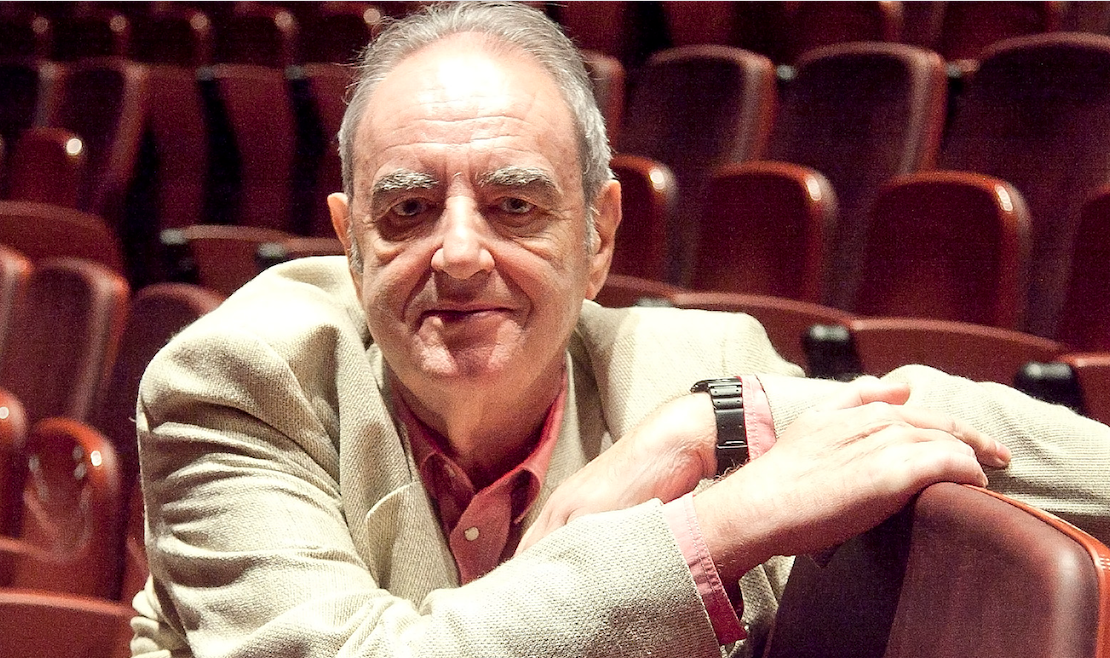Tomorrow is Tomás Marco’s eightieth birthday and on Tuesday a tribute concert will be held at the Real Academia de Bellas Artes de San Fernando, in Madrid.
The Spanish composer Tomás Marco (Madrid, 1942) will be 80 years old tomorrow, Monday 12 September. To commemorate the event, two of the institutions and organisations closely linked to the Madrid composer – specifically, the Fundación Sax-Ensemble and the Real Academia de Bellas Artes de San Fernando, entities of which the composer is respectively president and director – have joined forces to organise a concert on Tuesday 13 September at 12 noon, in which Sax-Ensemble will perform the complete works of his Paraísos, which Marco composed between 1988 and 2018, a time span of more than thirty years that allows us to appreciate his evolution as a composer.
As the composer himself explains on the website of the Real Academia de Bellas Artes de San Fernando, “throughout my musical activity I have composed several works for saxophones, some of which are included in the cycle Paraísos. Thus, Paraíso mecánico (1988) for four saxophones, Paraíso dinámico (1993) for four saxophones, piano and percussion or Paraíso danzante (2017) for four saxophones. In 2018 I wanted to bid farewell to the series with Paradise Finale for four saxophones and piano. But this is not the only way in which the work is produced; I thought of articulating a kind of multiple sonata so that it could be played with all four saxophones and piano or with any of the four solo saxophones accompanied by piano. This requires an approach in which each voice can function autonomously and, at the same time, fit perfectly with the others in a whole. It must be borne in mind that from a timbral, melodic or rhythmic point of view the work is not the same in versions of one or four, nor in any of the four solo versions. The result is, however, coherent in all its possibilities and functions as a vital continuum as varied as it is versatile. The version for four and piano, which is dedicated to the Sax-Ensemble, was premiered on 19 December 2019 in the auditorium of the Real Academia de Bellas Artes de San Fernando with the ensemble conducted by Santiago Serrate”.
The musical director of Sax-Ensemble, Santiago Serrate, explains, with regard to the works that will be performed in concert, that “Paraíso mecánico presents a repetition of notes and scales that resembles a locomotive, rhythmic and inexorable, without great melodic lines. Paraíso dinámico, on the other hand, starts with a great initial movement in which each instrument has its own life within the unit, and suddenly the piano and percussion enter, with the cymbals, resembling a very mystical music, like that of the Platonic spheres, so that the dynamism of earthly life is mixed with that of celestial life. Dancing Paradise is an absolutely danceable, almost Stravinskian music from Consecration of Spring, which invites to dance. Finales de paraíso, finally, has the peculiarity of being a multisonata. It is a work for four saxophones and piano, but it is called a multisonata because it can be played with all four saxophones and piano, with any of the saxophones alone accompanied by the piano, or with the piano and one, two or three of the saxophones. The work works in all cases, although obviously with different textures”.
In the tribute to Tomás Marco, the collaboration of the BBVA Foundation is fundamental, as it will make possible the subsequent release of an album that will be the first recording of the complete works of the composer’s Paraísos.
Tomás Marco is the equivalent of a Renaissance man,” says Santiago Serrate. He is so because of his enormous culture and his interests, which go beyond music and go into painting and sculpture – he is in contact with great plastic artists such as Fernando Zóbel and Pablo Palazuelo – and science, so that in his work there are numerous incursions into physics and mathematics”.
At a time when the Iberian peninsula was more closed in on itself due to the dictatorship,” adds Serrate, “it was the composers of the generation of ’51 – notably Cristóbal Hallfter, Luis de Pablo and Tomás Marco – who imported many of the techniques that were emerging in Europe at that time, with Pierre Boulez, Olivier Messiaen, Luigi Nono… Tomás Marco was an assistant and student of Karlheinz Stockhausen and had a great friendship with Luciano Berio”.
